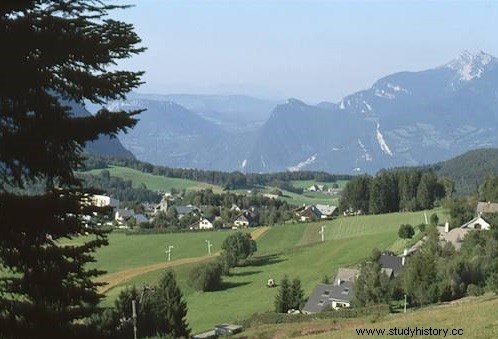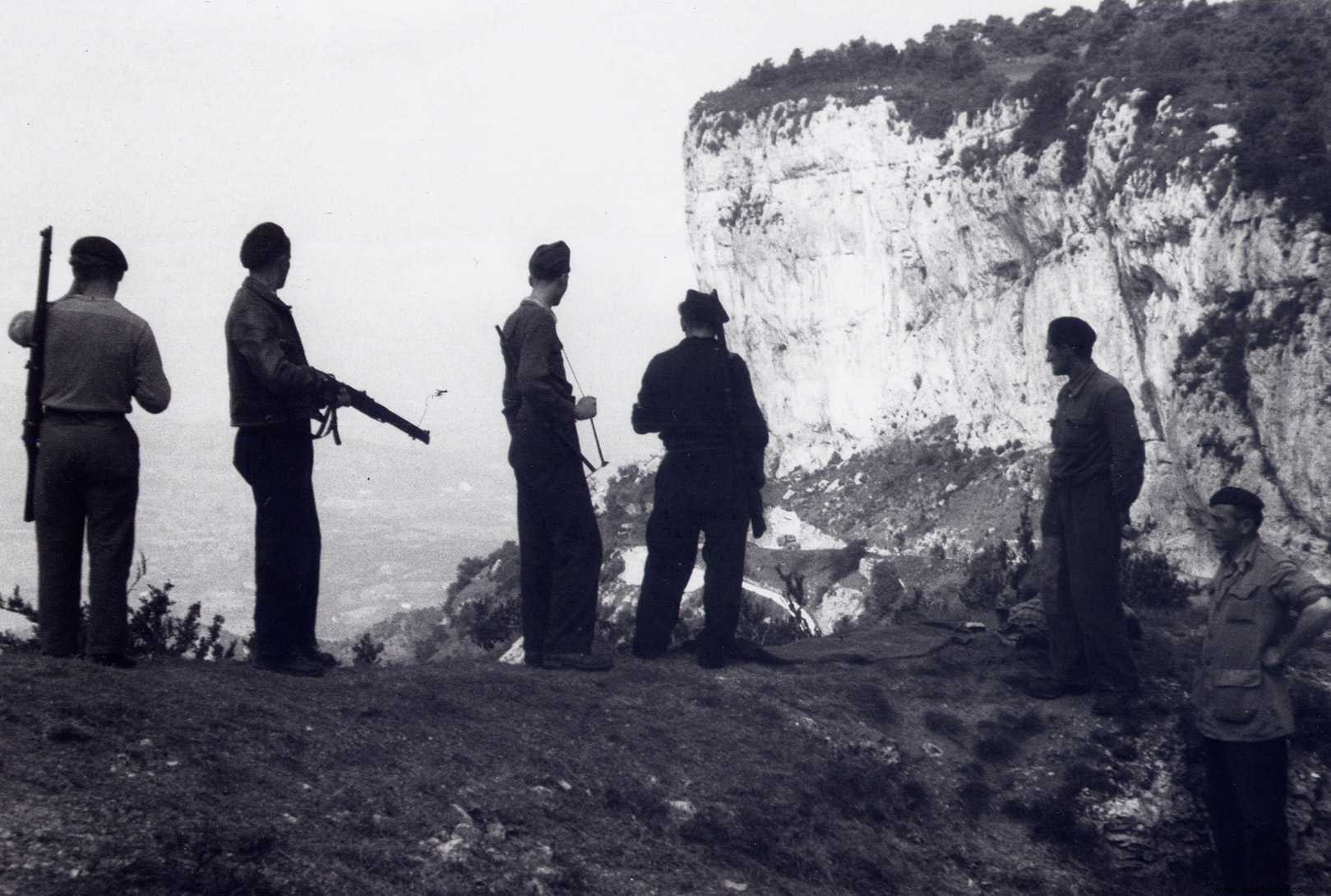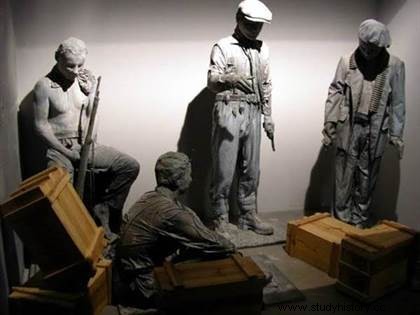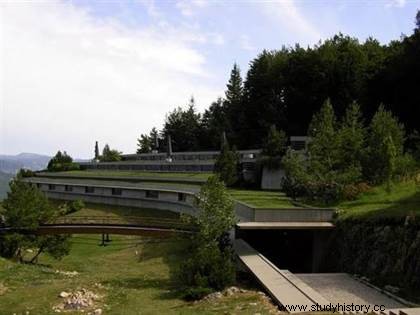 The Vercors Park is a grandiose territory located in the heart of Dauphiné, vertigo of cliffs, breath of lofty plains, dark forests and clearings of light. Six natural regions make up this magnificent and unique country. To the north the Quatre Montagnes, to the northwest the Coulmes, to the west the Royans, to the east the Trièves, to the south the Diois, in the center the Historic Vercors. The Vercors massif, a veritable natural fortress, sheltered many guerrillas during the Second World War and was a center of the Resistance in France. Surrounded and attacked from all sides by the enemy in July 1944, it was a death trap for many combatants and civilians.
The Vercors Park is a grandiose territory located in the heart of Dauphiné, vertigo of cliffs, breath of lofty plains, dark forests and clearings of light. Six natural regions make up this magnificent and unique country. To the north the Quatre Montagnes, to the northwest the Coulmes, to the west the Royans, to the east the Trièves, to the south the Diois, in the center the Historic Vercors. The Vercors massif, a veritable natural fortress, sheltered many guerrillas during the Second World War and was a center of the Resistance in France. Surrounded and attacked from all sides by the enemy in July 1944, it was a death trap for many combatants and civilians.
Geography of Vercors
Located in the Northern Prealps, between Isère and Drôme, in the Rhône-Alpes region, this mountainous part of Dauphiné culminates at 2,341 m at Grand Veymont. Between Valence, Die and Grenoble, it is bounded to the north by the Isère, to the east by the Drac, to the south by the Drôme and to the west by the Rhône valley. It is a high limestone plateau, cut by the tributaries of the Isère (notably the Bourne), dotted with chasms (notably the Berger chasm, at -1,141 m), caves and resurgent rivers, such as the underground Vernaison, 20 km long.
The Vercors is largely covered with forests (beeches, conifers). Logging and livestock are the main activities, supplemented by tourism (caving, green and historical tourism, cross-country skiing, hiking), especially around Villard-de-Lans. Created in 1970, the Vercors Regional Natural Park covers 135,000 ha, over the entire Vercors massif as well as in Royans, Trièves and Diois.
It is the aspect of a natural citadel that germinated in the minds of the initiators of the "Mountaineers" plan the idea of making it a bastion of the French Resistance and an advanced base for the reconquest of the occupied country. Access to this fortress is rare, the roads were not cut into the cliffs or at the bottom of the gorges until the end of the 19th century, and the "steps" which allow you to cross the rocky barriers of a valley at the other are narrow and easy to keep.
The Vercors, fortress of the Resistance
 As early as 1942, the Vercors welcomed the first resistants, soon joined by many refractory to the STO. The situation of the massif and its relief lent itself to the installation of an organized maquis, which numbered about four hundred people in March 1944. However, it was nearly four thousand volunteers who gathered after the Allied landings of June 6 to prevent German troops from the south to reach Normandy. A first German advance was blocked on June 15. On July 14, the Vercors was supplied with equipment by a major parachute operation.
As early as 1942, the Vercors welcomed the first resistants, soon joined by many refractory to the STO. The situation of the massif and its relief lent itself to the installation of an organized maquis, which numbered about four hundred people in March 1944. However, it was nearly four thousand volunteers who gathered after the Allied landings of June 6 to prevent German troops from the south to reach Normandy. A first German advance was blocked on June 15. On July 14, the Vercors was supplied with equipment by a major parachute operation.
However, fifteen thousand German soldiers then began the encirclement of the massif. On July 21, German commandos dropped by gliders at Vaissieux began the massacre of resistance fighters and their dispersal. The Saint-Martin hospital was evacuated to the cave of the Luire which the Germans stormed on 27 July. Only one wounded escaped and the nurses were deported to Ravensbrück. The reprisals lasted until August 19. In total, nearly eight hundred inhabitants and guerrillas lost their lives there. A monument was erected in memory of the Vercors resistance fighters at the Col de la Chau. In Vaissieux-en-Vercors, a Resistance museum retraces the history of the maquis.
The paths to freedom - National Historical Site of the Resistance in Vercors
This route presents:
- The Resistance Memorial du Vercors
- The necropolises of Vassieux en Vercors and St Nizier du Moucherotte (where Jean Prévost is buried with his fighters)
- The Garden of Memory in Vassieux
- The Porch of the Grotte de la Luire in Saint Agnan en Vercors
- The villages of Malleval and Valchevrière
- The Pas de l'Aiguille and the Resistance Museum in Vassieux
 Created in 1994, it brings together 10 historical sites and 60 places of memory present on the Vercors Plateau.
Created in 1994, it brings together 10 historical sites and 60 places of memory present on the Vercors Plateau.
The Resistance Memorial in Vassieux en Vercors
Central element of the National Historic Site of the Resistance in Vercors , the Resistance Memorial, located at the Col de la Chau, is an achievement intended to make memory tragic events in Vercors. Away from any construction, and located on the edge of the cliff in the town of Vassieux en Vercors , the chosen site offers a breathtaking view of the entire massif and the battlefield. The Memorial is not a museum of objects. The museography uses staging, image and sound.
Opening :
- Open daily. Opening hours:inquire.
- Closed from November 12 to the beginning of the Christmas holidays (closed on December 25 and January 1).
Resistance Memorial - Tel. 04 75 48 26 00
This email address is being protected from spambots. You must enable JavaScript to view it. - www.memorial-vercors.fr
The Hamlet of Valchevrière
 8 km from Villard de Lans, on the road to Bois Barbu, stands Valchevrière. During the last war, this small hamlet was an important lock of resistance blocking the passage to Vercors Central. On July 23, 1944, the Nazis seized it. Of the village, only a few ruins remain today. overgrown with trees. Only the chapel remains erected, the last station of a pilgrimage bringing together parishioners each year on the first Sunday of September.
8 km from Villard de Lans, on the road to Bois Barbu, stands Valchevrière. During the last war, this small hamlet was an important lock of resistance blocking the passage to Vercors Central. On July 23, 1944, the Nazis seized it. Of the village, only a few ruins remain today. overgrown with trees. Only the chapel remains erected, the last station of a pilgrimage bringing together parishioners each year on the first Sunday of September.
Access:Departure from Villard, Essarton bridge. Take the Bois Barbu road towards Herbouilly. In winter, this road turns into a cross-country ski trail from Bois Barbu.
The Cave of the Luire – St Agnan-en-Vercors
The memory of men...
A curiosity for a long time, it is under a vast entrance porch that the hospital of the maquis comes to take refuge on July 22, 1944. Under this inhospitable and humid shelter, about 130 wounded will come to be dressed. Thanks to the benevolence of nurses and doctors, a large part of the sick will leave the porch of the cave before Nazi troops invaded it. A guide will make you discover the history of these places, these women, these men, who resisted in this place.
Grotte de la Luire - Tel. 04 75 48 25 83
This email address is being protected from spambots. You must enable JavaScript to view it. - www.grotte-luire-vercors.com
To go further
- Resistance in the Vercors:History and places of memory, by Gilles Vergnont. Glénat pocket, May 2012.
- Vercors, the trails of the Resistance, by Jean Daumas, Glénat, April 2017
